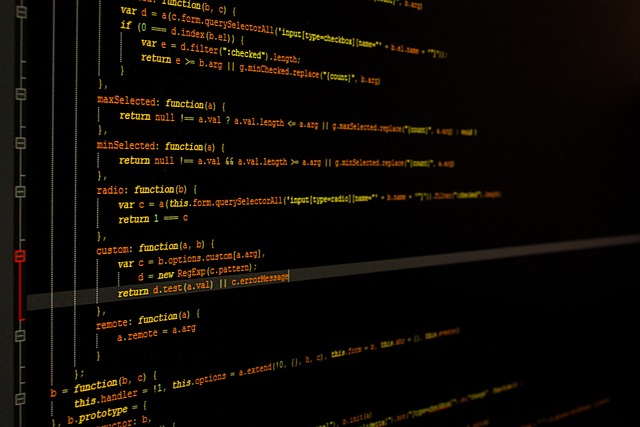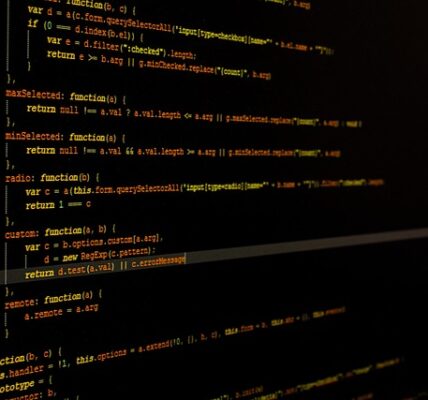State in React JS has become one of the central questions for developers of contemporary web apps. Is it necessary to use state in React apps thoroughly in order to create a functioning, user-friendly application? Can state-free components be used to simplify and optimize the process of web app development? How to make a wise balance between minimalistic state usage and the preservation of functional capability?
The necessity of an effective approach to using React state has become especially relevant due to the increasing complexity of modern web applications. Having an organizationally-rich architecture, sophisticated user interaction, and scalable code is important for applications that are used by a large user-base on a frequent basis. The establishment of a comprehensive React framework that uses state optimally is therefore paramount to maintain the scalability of the application and the corresponding user experience. According to recent research by Nielsen Norman Group and Microsoft, 70% of companies believed that increasing user experience and scalability of web applications was one of the top three factors in terms of resource investment.
In short, the use of component state in React apps requires a complex approach unifying the React framework with efficient, cutting-edge techniques. In this article you will learn the basics of using state in React, its advantages and drawbacks compared to state-free components, and the recommended best practices of managing state throughout the app development process. You’ll also get insights about how to use state for allowing data to accept user input, making components interactive, and making your app more manageable and sustainable.
In addition to practical figures and code snippets, best practices and theory for creating a powerful React architecture that uses state to its fullest capabilities will be discussed. Visitors will leave this article having learned about the benefits of state in React, its implementation in the modern web development industry, and with strategies and tools that they can use to further optimize their web app performance.
Definitions
In React, State is an object that stores dynamic data and helps to manage component’s data and control component’s behavior. It stores data related to the component such as user inputs, server responses, etc. And it is mutable. It allows React components to change over time, depending on the user messages, inputs, and other related events. It is one of the core concepts of React, and it is the primary source of data for the React components.
State makes React components dynamic and interactive. It helps to hold the data and provide it to the components during the components’ lifecycle. When the state of one of the components changes, it creates an update in its entire sub-tree and consequently triggers an update in the App component.
The state in React can be used with two methods: the constructor method and the useState hook. The constructor method is a JavaScript method which is used to create and initialize the state object. The useState hook is a built-in React hook that creates a state variable and specifies its initial state. When the state is changed, the component re-renders, and the new state is reflected in the UI.
State is an important React tool and it is essential to use it in order to build React apps. It allows developers to store and alter data in order to create an interactive and dynamic user experience. Using the state in React helps developers build apps with greater flexibility and control over the user interface.
What is State in React JS
Introduction to State in React JS
State is a complex structure which allows a React-based application to store data in order to process and retrieve it for display or other purposes. Additionally, it enables React components that are connected to the state to remain updated when the data is changed. React’s state management system is designed to store parts of the application’s data that can be changed based on user interaction or other events. This enables any React component to access the value of the state to display dynamic content.
How to Use State in React
To begin using state in React, a component must first include state to the component class. This requires the line ‘this.state’ before declaring the state and its value. Then, the value of the state should always be given in a JS object.
Once the state has been created, it can be updated using the .setState() method. This method must be used instead of manually changing the properties of the JS object. This state will then be updated in the component’s render method, allowing the components to display different content based on the state.
Additionally, there are times when a state must only be updated in an asynchronous way, notably due to external factors. In React JS, a callback function is used with this.setState() to ensure that the state is updated precisely when it is needed.
React’s state can also be used to store data that is sent from an external source, such as an API. This external data is then stored in the states and can be used to render dynamic content in a React component.
Pros and Cons of React State
Using React state in an application effectively can be beneficial, however, it is important to consider any potential issues or flaws that can occur with improper state management.
- Pro: Easily Manageable – React’s state system is simple to understand and work with.
- Pro: Changes Easily Tracked – React’s state system enables developers to see when and why changes are made.
- Con: Complexity – React state can become complex with large applications, making managing and debugging it difficult.
- Con: Too Much Data – React state can tend to store too much data, which can slow down the application if there are too many updates.
Exploring the Concept of State in React
What is State?
State is an important concept in React. It is an object that holds information that can be used within the component. This information can either be dynamic data, such as data retrieved from an API call, or it can be static data, such as a user’s preference setting. The state is stored in the component’s state variable, and can be accessed using this.state. By default, the state is initialized to an empty object, but it can be initialized with any other values when the component is created.
How to use State
When using state in React, it is important to keep in mind two core rules. The first rule is that state should only be changed using the setState() method. This method is used to inform React that the component’s state has changed and that the component needs to be re-rendered with the new state. The second rule is that state should only be changed in response to user events, such as a button click or input change.
Using setState() allows React to update the component’s UI to reflect the new state. It also enables React to use a Virtual DOM implementation, which makes it much faster to update the UI without having to re-render the entire page.
The concept of state can be used in a variety of ways. For example, it can be used to store the current page a user is on, the size of the window, or any other information needed by the component. It can also be used to implement features such as form validation, allowing the component to display an error message if the user enters an invalid value.
State can be an incredibly powerful tool in React, allowing for complex features to be easily implemented. However, it is important to keep in mind the two rules mentioned above: state should only be changed using the setState() method and it should only be changed in response to user events. Following these two rules will ensure that the state is always up-to-date and consistent between different components, providing a better experience for the user.
Harnessing the Power of State in React Applications
Understanding the State of React
In the world of web development, state management has become a popular topic as developers strive to build more powerful and complex applications. One of the most popular technology stacks for creating applications is the combination of React, a JavaScript library developed by Facebook, and Redux, a library that manages application state. However, React also has its own built-in state management library, which is suitable for simple applications.
When used correctly, React’s state can serve as a powerful tool that allows developers to build interactive user interfaces. When a user interacts with a React application, it is the application’s state that responds by changing the interface, allowing the user to interact with it. For example, when a user clicks a button, the application’s state can be updated in response, causing the button to change colour or revealing a new element in the interface.
Using State with React
Utilising state in React is relatively straightforward. Every React component has a set of built-in hooks that can be used to overwrite the default state. These hooks allow you to access the current state of a React component, as well as update the state after an event, like a user click. Once you have access to the state, you can manipulate it however you like, then pass the new state back to the component. This new state will then be applied to the interface, allowing you to change it dynamically.
It’s important to note though, that React’s state is only temporary, so it shouldn’t be used to store information that is important in the long-term. For this, developers should use Redux, as this not only stores state, but also allows developers to access a single source of truth for the application.
Overall, using state with React can be a quite powerful tool, allowing developers to create fluid and engaging applications. However, care should be taken to ensure that state is stored in an appropriate manner, and adhering to the best practices laid out by the React and Redux teams is a good idea if you want to make sure your applications remain responsive and reliable.
Conclusion
Are you ready to dive deeper into the fascinating world of React JS? State plays a critical role in this powerful JavaScript Library and understanding what it is and how to use it correctly can open up a whole new range of possibilities. To further explore the intricacies of React JS, make sure to follow this blog, as new releases will provide even more insight.
In the meantime, let’s look at a few FAQs that can help you understand more about state in React JS.
What is state? State is a JavaScript object that holds relevant component information and allows React components to update and render properly. It is an internal data structure for React components and is handled through the use of setState().
How should I use state in React JS? As mentioned above, state should be used when working with React components and be used to maintain information relevant to that component. It should be handled through setState(), and should not be mutated directly.
What’s the difference between state and props? Props are inputs passed to a React component that can not be modified. This is in contrast to state, which is used to maintain mutable data inside the component.
How do I pass state between components? State can be passed between components by using props. In contrast to props, state values will be affected when it is modified inside the component.
When should I use stateless components? Stateless components are used when components have no need to state, such as stateless functional components, and data is being handled through props. This could be useful if a component needs to be shared with multiple applications.




